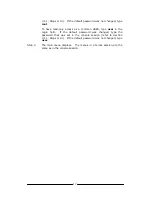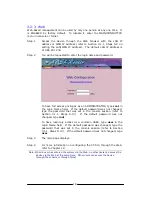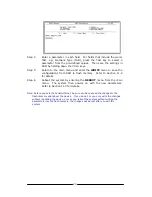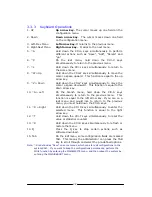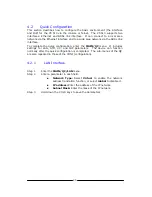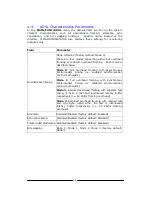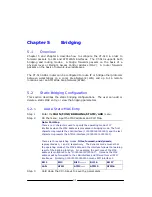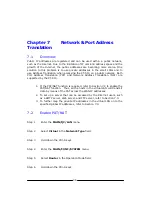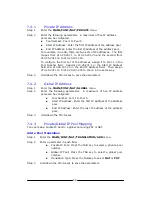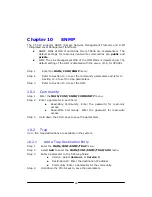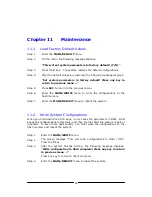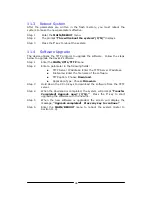
31
Chapter 5
Bridging
5.1 Overview
Chapter 5 and Chapter 6 describe how to configure the CT-510 in order to
forward packets to LAN and ATM WAN interfaces. The CT-510 supports both
bridging and routing modes. A bridge forwards packets on the basis of a
physical level or Medium Access Control address (MAC). A router forwards
packets on the basis of network-level addresses.
The CT-510 ADSL router can be configured to route IP or bridge other protocols
between workstations on a Local Area Network (LAN) and up to 16 remote
locations over an ATM Wide Area Network (WAN).
5.2
Static Bridging Configuration
This section describes the static bridging configurations. The user can add or
delete a static MAC entry, or view the bridging parameters.
5.2.1
Add A Static MAC Entry
Step 1
Enter the
MAIN/CONF/BRIDGING/STATIC/ADD
menu.
Step 2
On the menu, input the MAC address and Port Map.
Note: Port Map
There are 17 characters used to specify the operating mode of 17
interfaces when the MAC address is processed in bridging mode. The first
character represents the LAN interface (10000000000000000) and the last
character represents the ATM16 interface (00000000000000001).
There are three operating modes:
filter, forward, and dynamic,
represented as 0, 1 and 2, respectively. The dynamic mode means that
the operating mode of the MAC address in the interface follows the learning
result of the bridging function. For example, the port map of the MAC
address is configured to be “10000000000000000". It means the MAC
address will be forwarded to the LAN interface and filtered from all ATM
interfaces. Similarly, 01000000000000000 means ATM interface 1.
Bit 1
Bit2
Bit 3………
Bit 16
Bit 17
LAN ATM1
ATM2……
ATM15
ATM16
Step 3
Hold down the Ctrl-S keys to save the parameters.
Содержание CT-510
Страница 1: ...CT 510 ADSL Router User Manual Version A3 0 June 3 2003 261028 002...
Страница 66: ...65 QUIT...

